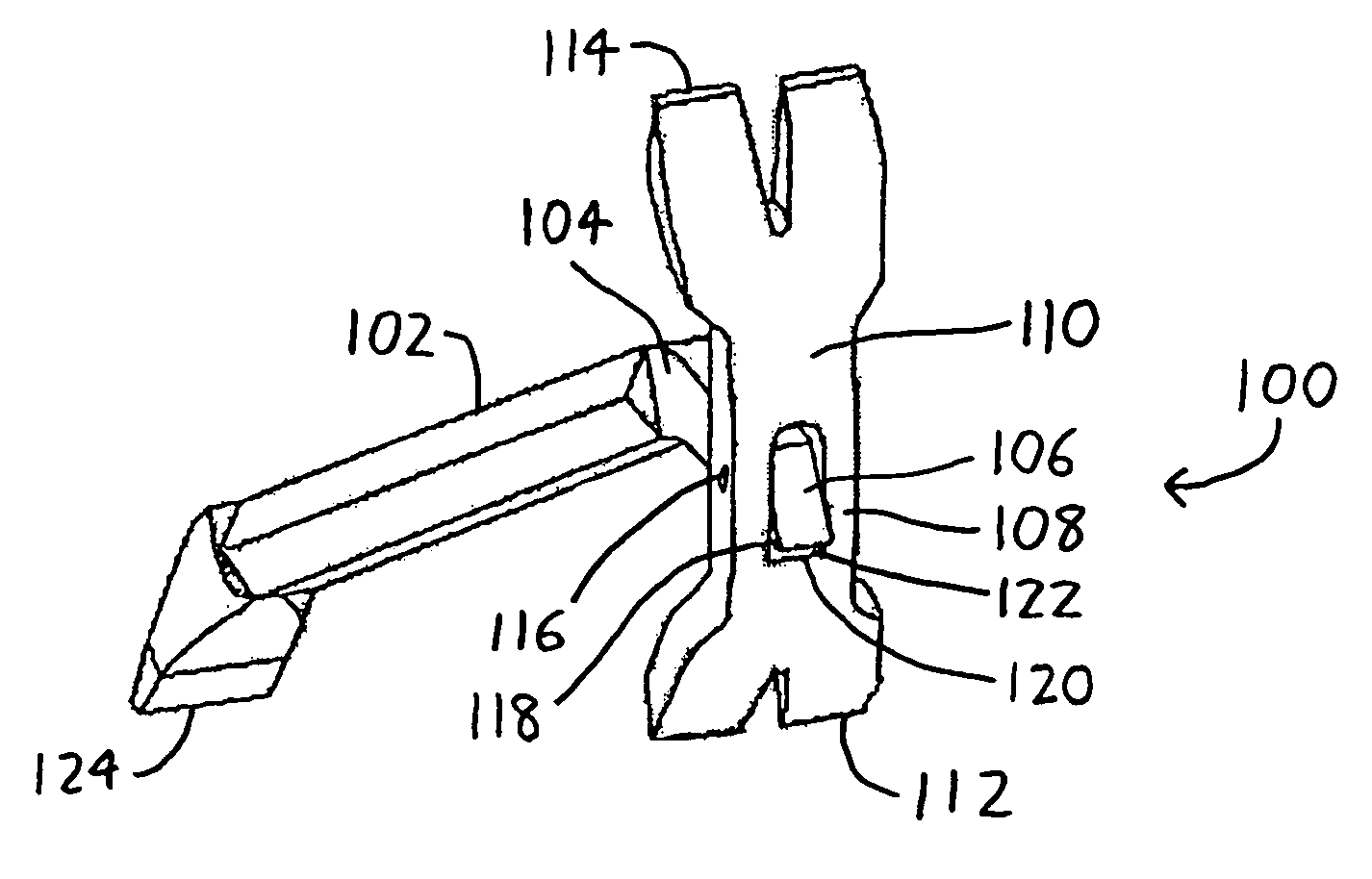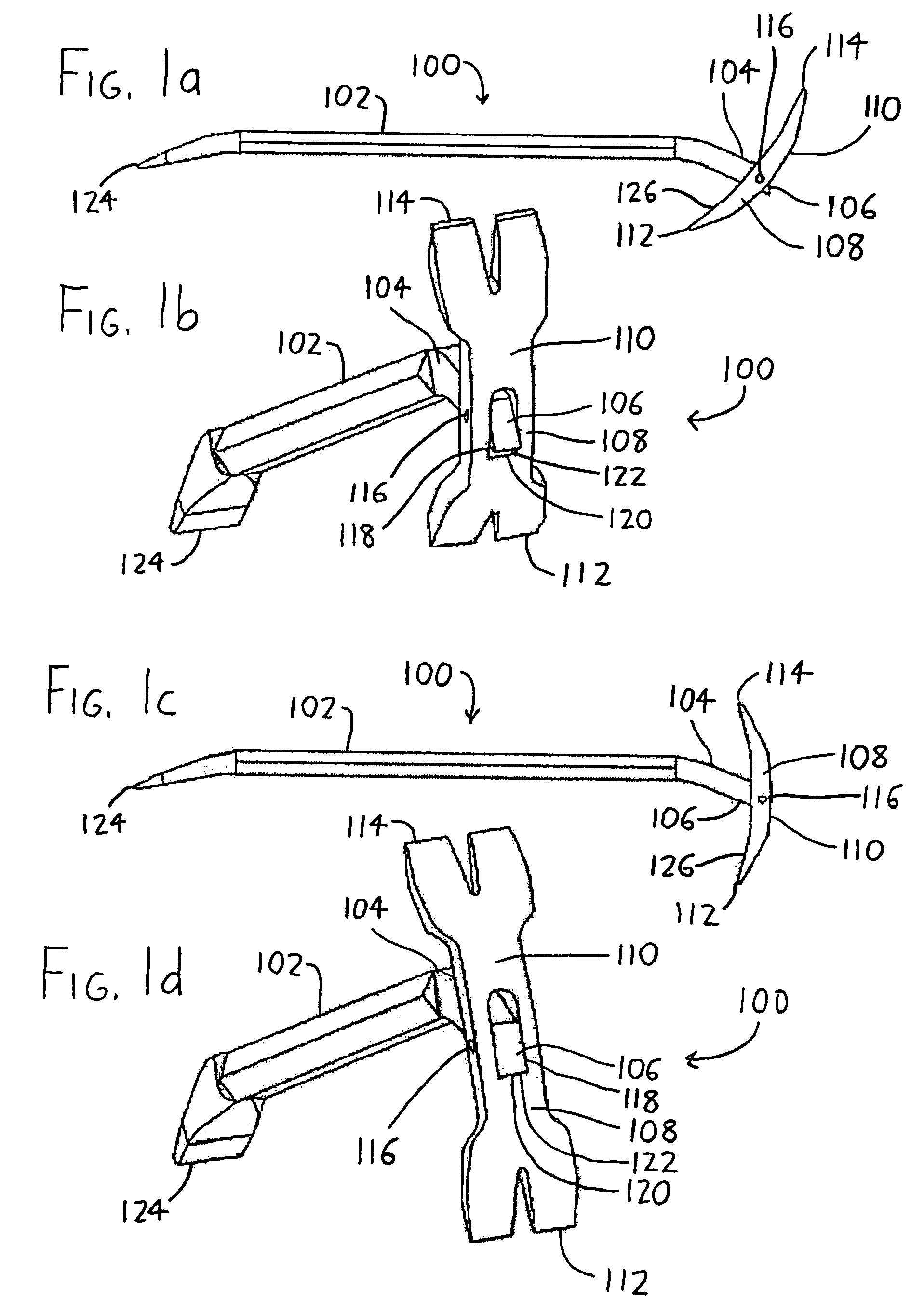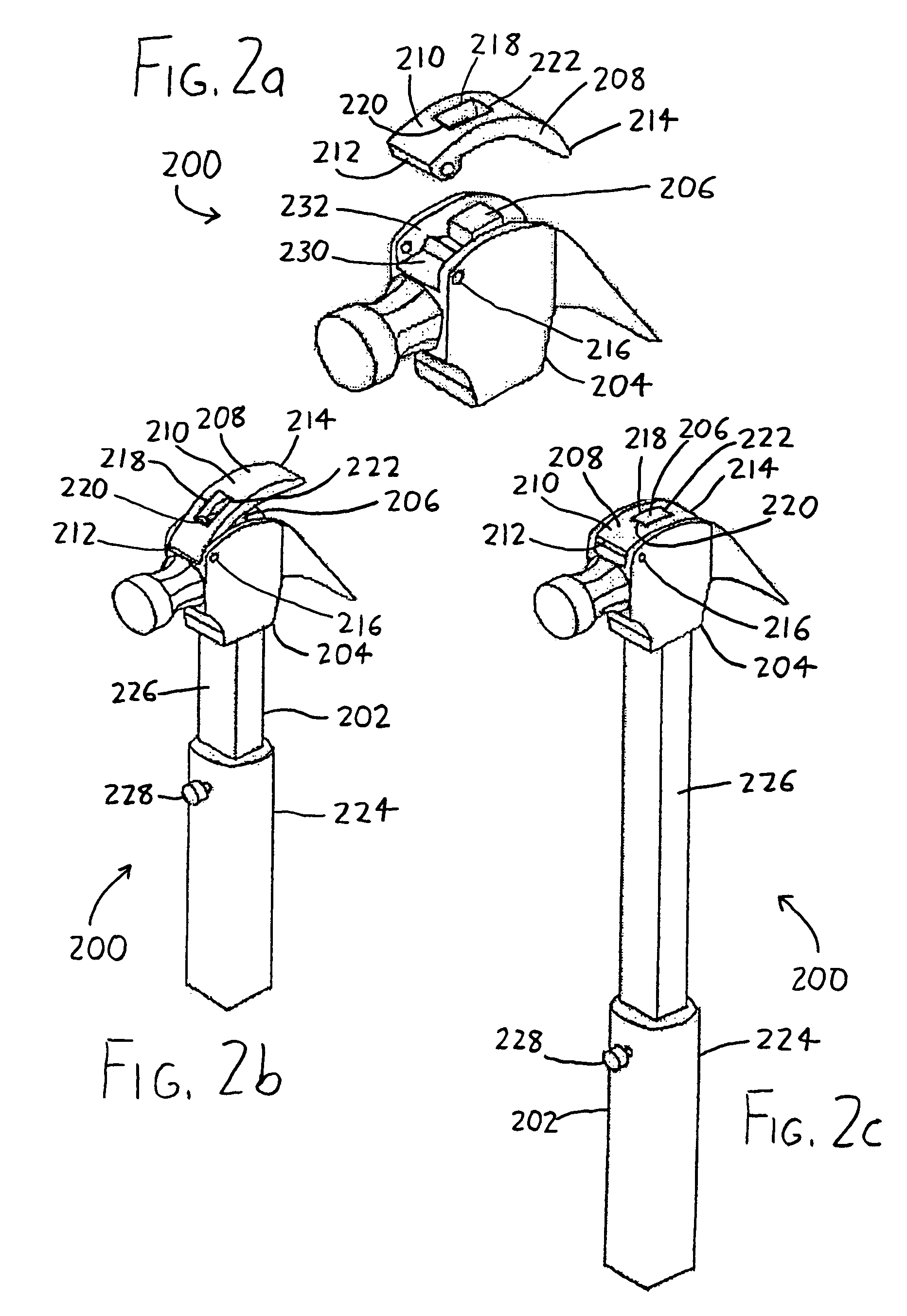Tool for pulling nails and other protrusions
a tool and protruding technology, applied in the field of hand tools, can solve the problems of ineffective claw hammer in pulling nails or other protruding objects, and achieve the effect of improving leverag
- Summary
- Abstract
- Description
- Claims
- Application Information
AI Technical Summary
Benefits of technology
Problems solved by technology
Method used
Image
Examples
Embodiment Construction
[0012]Referring initially to FIGS. 1a–1d (which are collectively referred to as FIG. 1), the pulling tool is presented in the form of a crowbar 100. The crowbar 100 has an elongated handle 102 with a tool head 104 at one end and a prying wedge 124 at its opposite end. The tool head 104 defines an anchor 106 against which a nail or other protrusion will be grasped, and it includes a jaw 108 which is pivotally affixed to the anchor 106 at pivot 116. The jaw 108 includes a jaw tip 112 and an opposing jaw tail 114, both of which are preferably defined as furcated prying wedges. A top bearing surface 110 curves in an arc from the jaw tip 112 to the jaw tail 114. An opposing jaw bottom surface 126 (FIGS. 1a and 1c), which faces the handle 102, also extends between the jaw tip 112 and the jaw tail 114. A cutout 118, defined as an aperture extending between the bearing surface 110 and the jaw bottom surface 126, is situated between the jaw tip 112 and the jaw tail 114. One side of the cutou...
PUM
 Login to View More
Login to View More Abstract
Description
Claims
Application Information
 Login to View More
Login to View More - R&D
- Intellectual Property
- Life Sciences
- Materials
- Tech Scout
- Unparalleled Data Quality
- Higher Quality Content
- 60% Fewer Hallucinations
Browse by: Latest US Patents, China's latest patents, Technical Efficacy Thesaurus, Application Domain, Technology Topic, Popular Technical Reports.
© 2025 PatSnap. All rights reserved.Legal|Privacy policy|Modern Slavery Act Transparency Statement|Sitemap|About US| Contact US: help@patsnap.com



